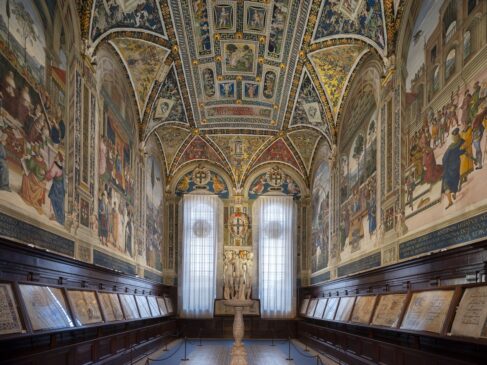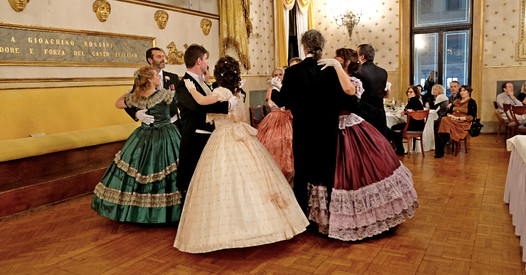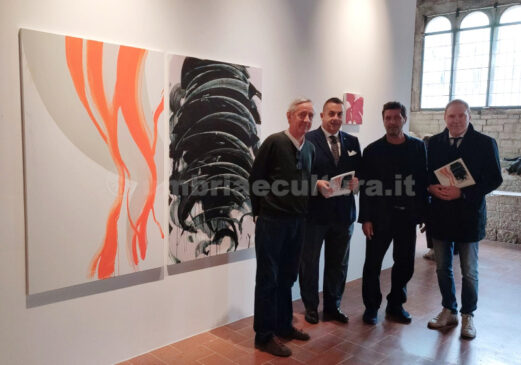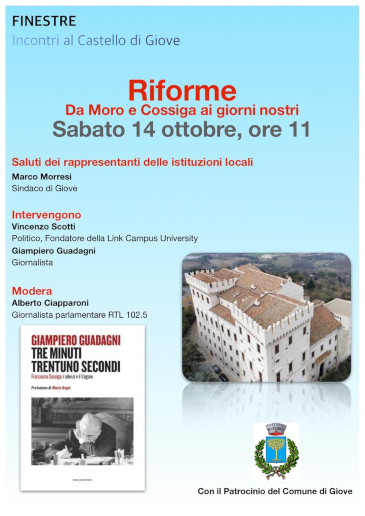The Piccolomini Library, built to honor the memory of his maternal uncle Enea Silvio Piccolomini (Pope Pius II) and to preserve the rich “book” heritage that the Pope and humanist had collected, was commissioned by Cardinal Francesco Tedeschini Piccolomini, archbishop of Siena (later Pope Pius III), around 1492.
The frescoes that follow one another on the three walls of the Piccolomini Library, painted with a wealth of enamelled colors and golden pastille inserts by Bernardino di Betto, called Pinturicchio, and his workshop (1503-1508), depict ten episodes relating to life and the pontificate of Pius II. Raphael also collaborated in their conception, whose five hundredth anniversary of his death occurs in this year.
A large fresco depicting the coronation of Pius III is in the façade of the Library. This scene is inspired by the theatrical representation of the election as pope played in Siena in Piazza del Campo to evoke the coronation in St. Peter’s in Rome.
In the ninth scene, depicting the canonization of Saint Catherine, among the audience of the representatives of the monastic orders two figures stand out: according to tradition, the young Raphael and Pinturicchio himself can be recognized. Beyond the portrait, some preparatory drawings by Raphael, preserved in Italian and foreign museums, show how the great artist had participated in the creation of at least two scenes in the Library.
At the center of the Library stands the marble group of the Three Graces (Roman art from an Hellenistic original), which Tedeschini acquired in Rome from Cardinal Colonna to place in the center of the Library.
Along the walls, inside display cases, the great choral books of the Siena cathedral are kept. The miniatures of the precious codices are painted by painters from Siena such as Sano di Pietro, Pellegrino di Mariano, Guidoccio Cozzarelli, Benvenuto di Giovanni and by non-local artists such as Girolamo da Cremona and Liberale da Verona.
The current floor, made by the Ginori di Doccia factory and dating back to 1839 (which replaces the original preserved in the Opera’s deposits), is made up of rhomboid-shaped ambrogette and painted majolica squares which, combined together, form the design that repeats the heraldic motif of the Piccolomini family, the golden crescent moon on a blue background.



